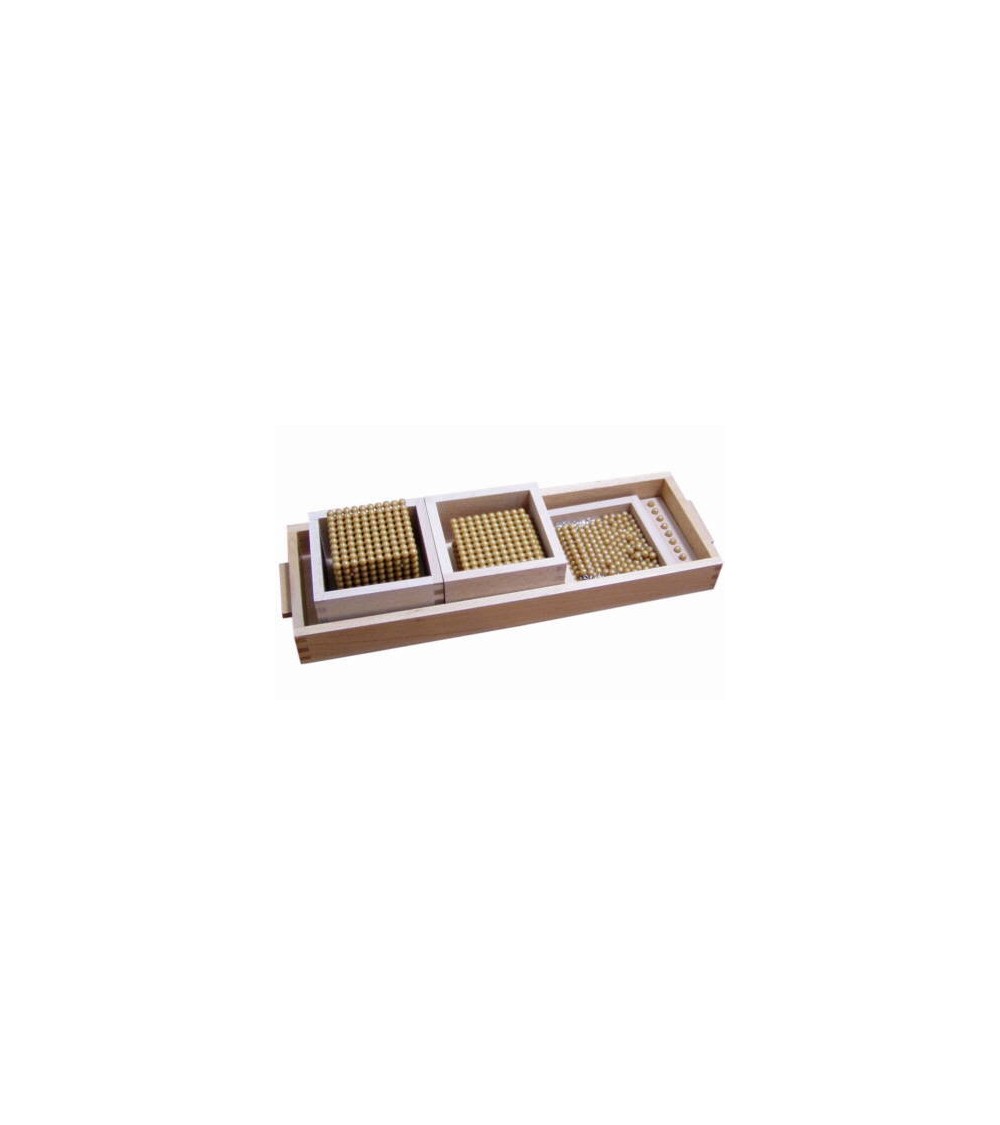Introduction to Decimal System
€45.99
Tax included
Learning the game of nine golden pearl material for the decimal system
including storage tray
The special form of nine pieces of the golden pearl material is specifically about the ten transition. The game of nine introduces elementary school students to the decimal number system and practices the names of the place values intensively (ones, tens, hundreds, thousands). The transition between ten becomes clear when only 9 pearls fit into the setting bar for single pearls. This is followed by an energetic STOP and the child experiences the transition to the next higher value (tens). When this is reached, it replaces 10 individual pearls with a ten bar. It is similar to the hundreds.
Use, advantages, areas of application for this Montessori material:
-
place given numbers
-
recognize every ten transition by a clear STOP
-
Recognize place values and name relationships, e.g. ten ones are a ten, ten tens are a hundred ...
-
Montessori bead material for children from 5 years
Scope of the Montessori numerical material:
1 thousand cube made of pearls approx. 7 x 7 x 7 cm
9 hundred plates made of pearls approx. 7 x 7 x 0.7 cm
9 tens bars 100 single pearls, diameter approx. 7 mm
1 wooden tray approx. 39 x 13 x 4 cm
2 wooden boxes with lids for single pearls and pearl sticks approx. 11 x 11 x 6 cm
1 setting strip for the single pearls
1 wooden cup for the single pearls approx. 4 x 3.5 cm
Instructions for the Montessori game of nine
An adult puts the tray with the bead material on the table. Now he takes the one-pearl
and says this is one. To the left of the one-bead, he puts the ten-stick and says That's ten. Now he compares the one-bead very emphatically with the ten-bar in order to clarify the difference in size. Also to the left of the tens bar is the hundreds plate. These are hundreds and the tens stick is compared with the hundreds plate. This is also done with the thousands cube (that's a thousand).
Please give me one; Please give me 10, please put the hundred on the table there, where are a thousand?
If the child still has difficulties with this assignment, calmly start the exercise from the beginning and possibly first take the one-pearl and the thousand-cube (two very different sizes).
If the child shows confidence in this exercise, the third of the three-step lesson comes:
the adult, for example, points to the tens rod: What is it? Now he points to the thousands cube: What is that? ....
Now he takes out the setting strip for the single pearls. He takes pearls one after the other and places them on the bar, counting them out loud (one - two - three ...... nine - STOP). After the ninth pearl, no more will fit on the bar and after a loud STOP is spoken to the child, it is made clear that with the next pearl, the one-pearls will be exchanged for a ten-stick. To do this, the tenth unit bead is only held between the thumb and forefinger next to the bar (ten units are a ten). A bar of ten is placed on the table and the individual pearls are returned to the tray.
The tens and hundreds are handled in the same way (10, 20, 30 ... 90 - STOP: Ten tens are a hundred - the tens bars are exchanged for a hundred plate) or (100, 200, 300 ... ..900 - STOP: Ten hundred are a thousand ...).
IDS32722021

